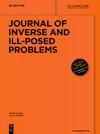A comparative study of variational autoencoders, normalizing flows, and score-based diffusion models for electrical impedance tomography
IF 0.9
4区 数学
Q2 MATHEMATICS
引用次数: 0
Abstract
Electrical Impedance Tomography (EIT) is a widely employed imaging technique in industrial inspection, geophysical prospecting, and medical imaging. However, the inherent nonlinearity and ill-posedness of EIT image reconstruction present challenges for classical regularization techniques, such as the critical selection of regularization terms and the lack of prior knowledge. Deep generative models (DGMs) have been shown to play a crucial role in learning implicit regularizers and prior knowledge. This study aims to investigate the potential of three DGMs – variational autoencoder networks, normalizing flow, and score-based diffusion model – to learn implicit regularizers in learning-based EIT imaging. We first introduce background information on EIT imaging and its inverse problem formulation. Next, we propose three algorithms for performing EIT inverse problems based on corresponding DGMs. Finally, we present numerical and visual experiments, which reveal that (1) no single method consistently outperforms the others across all settings, and (2) when reconstructing an object with two anomalies using a well-trained model based on a training dataset containing four anomalies, the conditional normalizing flow (CNF) model exhibits the best generalization in low-level noise, while the conditional score-based diffusion model (CSD*) demonstrates the best generalization in high-level noise settings. We hope our preliminary efforts will encourage other researchers to assess their DGMs in EIT and other nonlinear inverse problems.电阻抗断层扫描的变异自动编码器、归一化流量和基于分数的扩散模型比较研究
电阻抗断层扫描(EIT)是一种广泛应用于工业检测、地球物理勘探和医学成像的成像技术。然而,EIT 图像重构固有的非线性和非假设性给经典的正则化技术带来了挑战,如正则化项的关键选择和先验知识的缺乏。深度生成模型(DGM)已被证明在学习隐式正则化器和先验知识方面发挥着至关重要的作用。本研究旨在研究三种 DGM(变异自动编码器网络、归一化流和基于分数的扩散模型)在基于学习的 EIT 成像中学习隐式正则化器的潜力。我们首先介绍了 EIT 成像的背景信息及其逆问题的表述。接下来,我们提出了三种基于相应 DGM 的 EIT 反问题算法。最后,我们介绍了数值和视觉实验,实验结果表明:(1) 在所有情况下,没有一种方法能始终优于其他方法;(2) 当使用基于包含四个异常点的训练数据集的训练有素的模型重建有两个异常点的物体时,条件归一化流模型(CNF)在低水平噪声中表现出最佳泛化效果,而基于条件分数的扩散模型(CSD*)在高水平噪声中表现出最佳泛化效果。我们希望我们的初步努力能鼓励其他研究人员在 EIT 和其他非线性逆问题中评估他们的 DGM。
本文章由计算机程序翻译,如有差异,请以英文原文为准。
求助全文
约1分钟内获得全文
求助全文
来源期刊

Journal of Inverse and Ill-Posed Problems
MATHEMATICS, APPLIED-MATHEMATICS
CiteScore
2.60
自引率
9.10%
发文量
48
审稿时长
>12 weeks
期刊介绍:
This journal aims to present original articles on the theory, numerics and applications of inverse and ill-posed problems. These inverse and ill-posed problems arise in mathematical physics and mathematical analysis, geophysics, acoustics, electrodynamics, tomography, medicine, ecology, financial mathematics etc. Articles on the construction and justification of new numerical algorithms of inverse problem solutions are also published.
Issues of the Journal of Inverse and Ill-Posed Problems contain high quality papers which have an innovative approach and topical interest.
The following topics are covered:
Inverse problems
existence and uniqueness theorems
stability estimates
optimization and identification problems
numerical methods
Ill-posed problems
regularization theory
operator equations
integral geometry
Applications
inverse problems in geophysics, electrodynamics and acoustics
inverse problems in ecology
inverse and ill-posed problems in medicine
mathematical problems of tomography
 求助内容:
求助内容: 应助结果提醒方式:
应助结果提醒方式:


